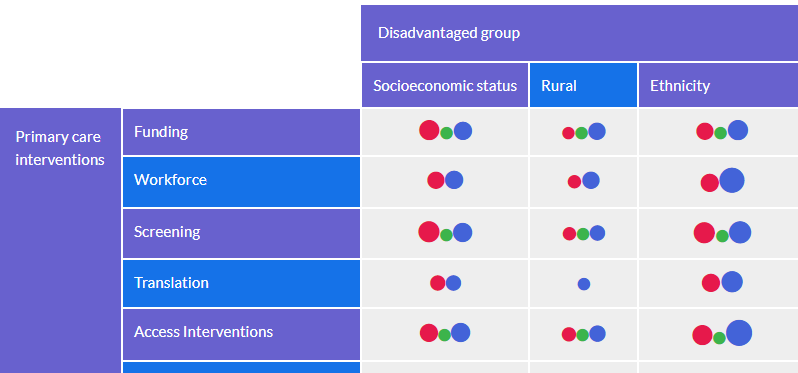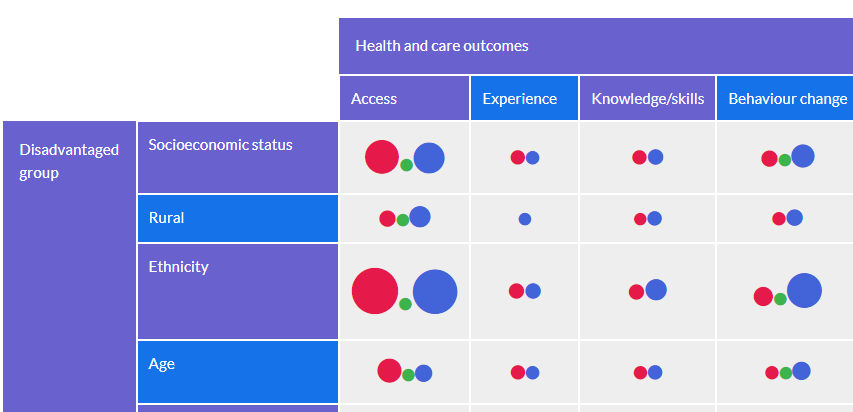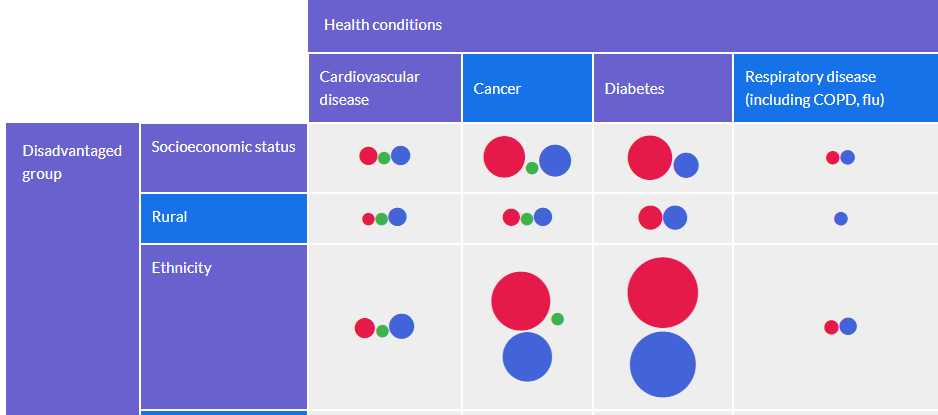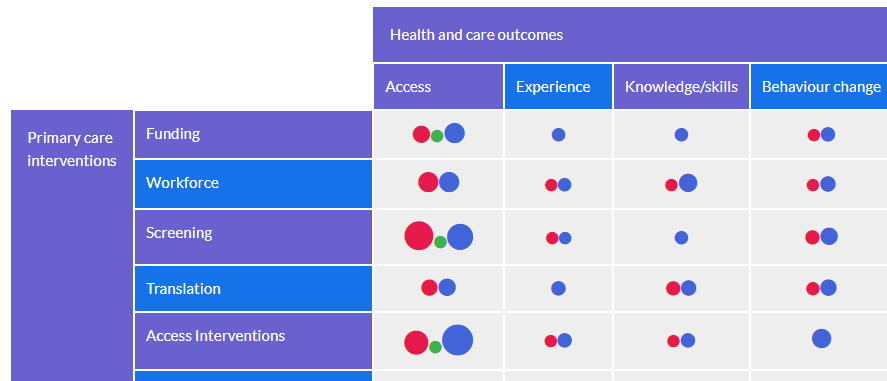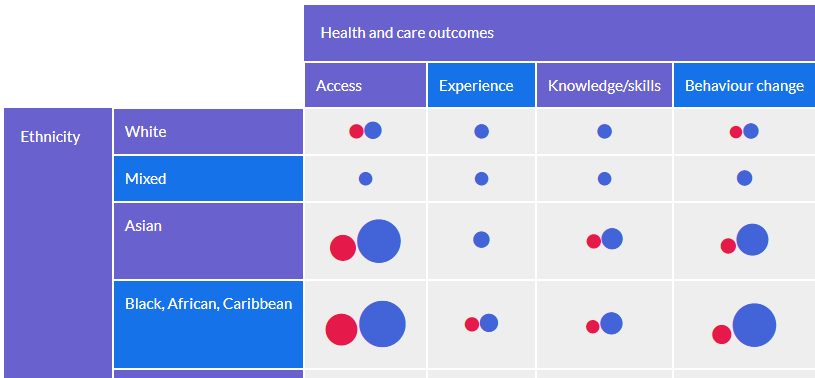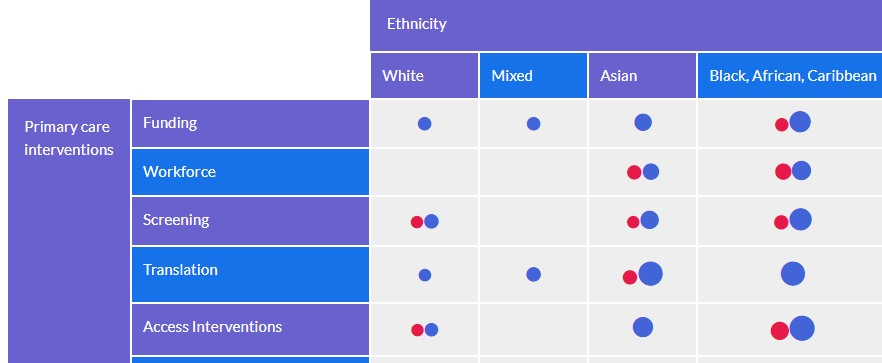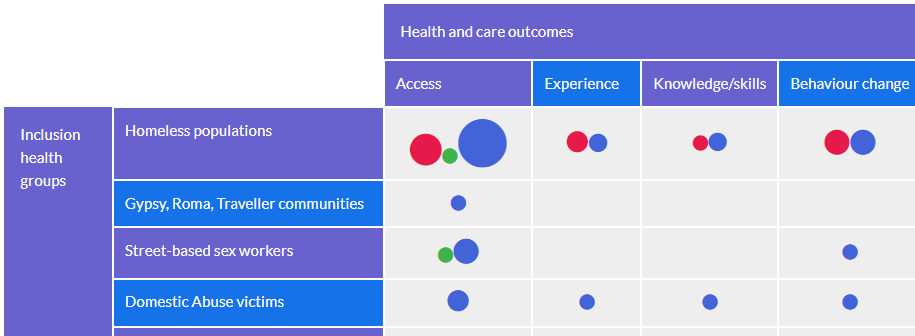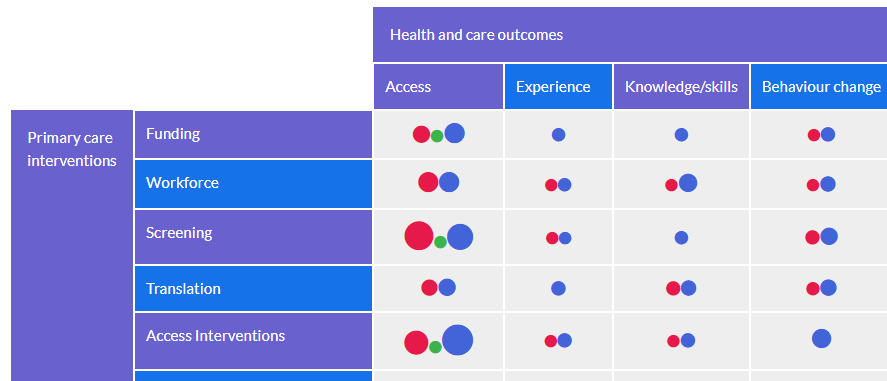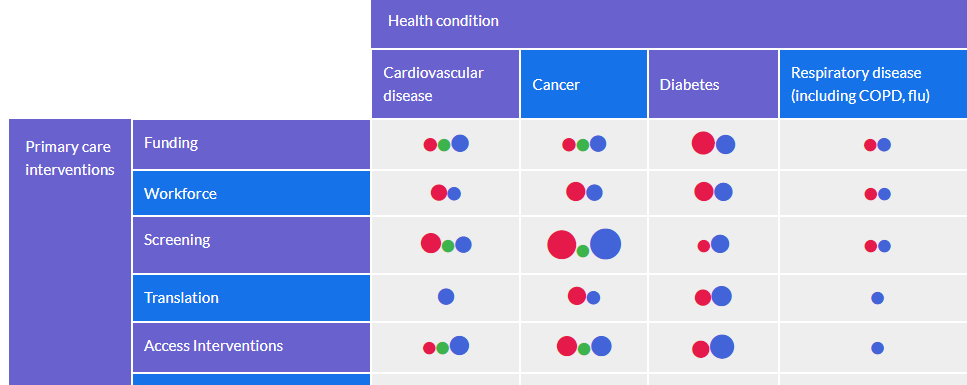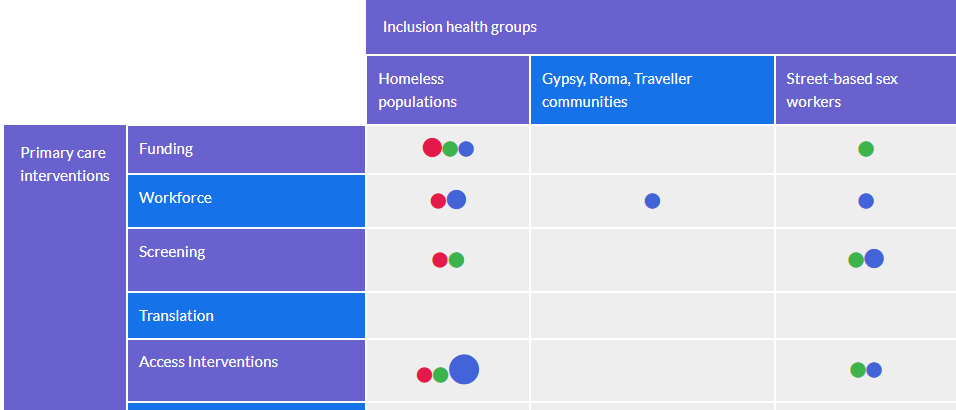We use evidence mapping software and automation tools developed by the EPPI Centre at UCL to create Living Evidence Maps of published research on What Works to address health inequalities in primary care.
Building on our previous research looking at interventions to address inequalities in primary care, we have trained a machine learning algorithm to help us to efficiently identify further relevant studies to added to the maps. Studies included in the maps focus on primary care, inequalities and interventions, comprising umbrella reviews, systematic reviews, and primary studies published in academic journal articles. International studies are included, but only from high-income countries because they are most comparable to the NHS.
If we judge an article to be relevant, we apply a series of labels and they appear in the Evidence Maps below. We continually identify further relevant studies (articles) to be coded, so these maps are ‘Living’ and we publish updates of the maps every month.
Each map focuses on a key topic relating to health inequalities in primary care. The size of the circles in each map represents the number of research articles, and their colour represents the different types of research articles (for example systematic review or primary study).
The maps will never include every study published on a topic, but we hope they contain enough to inform decision-making. If you find an article that you think should be included, please let us know by contacting us here.
Click on the images below to explore the interactive maps in full.
Primary care interventions by disadvantaged group
Explore primary care interventions which address inequalities across different disadvantaged groups.
Health and care outcomes by disadvantaged group
Explore primary care outcomes which address inequalities across different disadvantaged groups.
Health conditions by disadvantaged group
Explore what works in primary care to address inequalities across disadvantaged groups and a range of health conditions.
Core20PLUS5
Explore articles published across the Core20PLUS5 (adults) categories as part of the NHS England approach to tackling health inequalities.
Primary care interventions across different socioeconomic domains
Explore what works in primary care to address inequalities across a range of socioeconomic domains, such as area-based deprivation, income, employment and occupation.
Health and care outcomes by ethnicity
Explore primary care interventions to address inequalities across minority ethnic communities by health and care outcomes, such as access, experience or health condition.
Primary care interventions by ethnicity
Explore what works in primary care to address inequalities across minority ethnic groups.
Inclusion health groups by health and care outcomes
Explore what works to improve health and care outcomes for the following inclusion health groups: homeless populations, Gypsy, Roma and Traveller communities, street-based sex workers, domestic abuse victims, asylum seekers, migrants or refugees, people with drug or alcohol dependence, and people who experience disability.
Primary care interventions by health and care outcomes
Explore primary care interventions presented by a range of health and care outcomes, such as access, experience or health condition.
Primary care interventions by health condition
Explore primary care interventions presented across different health conditions.
Primary care interventions by inclusion health groups
Explore primary care interventions presented by a range of different inclusion health groups, including homeless populations, Gypsy, Roma or Traveller communities, street-based sex workers, domestic abuse victims, asylum seekers, migrants or refugees, people with drug or alcohol dependence, and people who experience disability.

